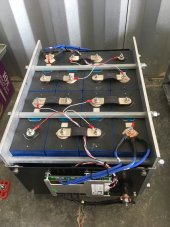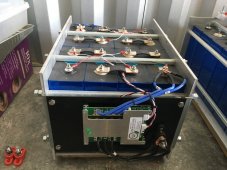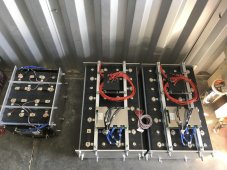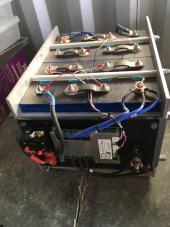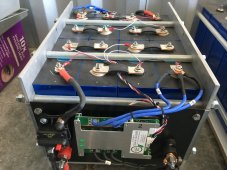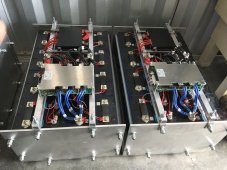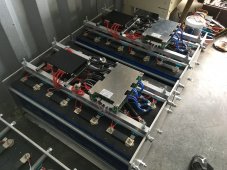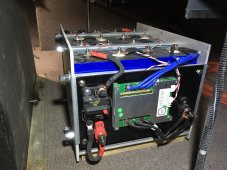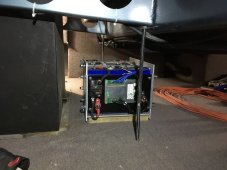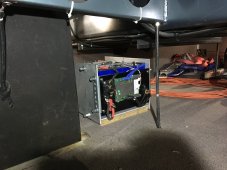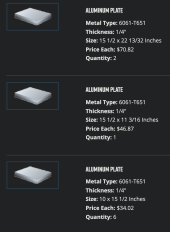An important discovery to make note of here in my implementation of a home brew clamp assembly. A fatal flaw in my design...
As I connected up my bus bars, on one pack (seen on right in picture), when I connected the bridge cable (little red cable) on the right-hand side 48v pack, to connect the 2 halves of that pack, I was getting a spark, and could hear a rapid discharge (like a boiling sound from one of the cells). I quickly removed it. The red bridge cable was fine if I bridged the pack on the other end (bottom end in picture). But connecting the 2 halves on the top end between the 2 halves would get a spark...
So I removed all the bus bars, did some voltage testing and found that 12 of the cells across my 3 battery banks, the negative conductor of the cell is grounding to the aluminum clamp chassis. Wow, this is bad. I disassembled all of the clamp assemblies, and found that due to the sharpness of the threads on the threaded rods, some of the cells got pierced (the blue wrap on the battery cells is very delicate, and there is aluminum casing under the blue wrap of the cells, which is apparently the same conductivity as the negative terminal).
So my advice to anyone who is using metal/aluminum clamp assemblies and fasteners which are conductive, check each cell and make sure the blue wrap is fully intact with no breaches, and negative of the cell chassis is not grounding to the clamp chassis in any way. This can cause one or more cells to have impedance or dead-shorting in relation to other cells causing a drain or short on a cell. I had some cells which just had some impedance but not like a full dead-shorting condition. This kind of thing could cause a behavior like you have a malfunctioning cell, or in my case the one which had a dead-short making it obvious for me to find.
So now to regroup in my plan. I am going to put silicone tubing along all the threaded rod sections where they run along the cells, drill the end-plate holes a bit larger to give the wiggle room for extra clearance required with the tubing installed, put some blue electrical tape over the nicks on the cells, and confirm that each cell is insulated from the clamp chassis.
So I just thought I'd mention this, as others may have the same problem without necessarily knowing about it.
View attachment 48146
View attachment 48147
View attachment 48148





